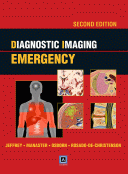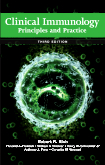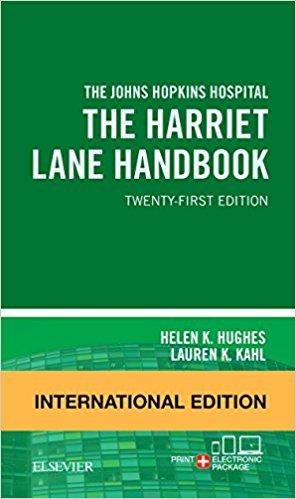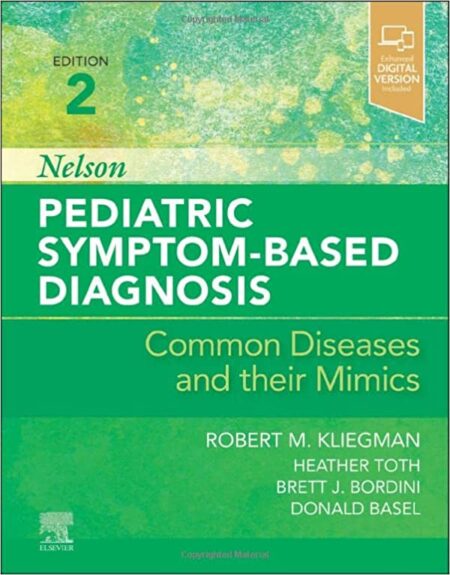描述
Netter’s Gastroenterology, 2nd Edition – Web Version Only
By Martin H. Floch, MD and Neil R. Floch; Edited by C.S. Pitchumoni, Kris V. Kowdley, Raul Rosenthal and James Scolapio
672 pages
Copyright 2010
Description
Netter’s Gastroenterology, 2nd Edition, edited by Martin H. Floch, MD, covers the entire field of digestive diseases—including those related to gastroenterology, hepatology, and nutrition—in one concise reference. A templated format offers a quick and memorable summary of nearly 300 of the most commonly encountered clinical conditions, from the classic to more contemporary, while hundreds of vivid Netter illustrations depict key anatomic structures and highlight important concepts.
Key Features
Uses nearly 400 Netter and Netter-style images that highlight key aspects of patient presentation, pathophysiology, and relevant anatomy to provide a rich visual understanding of the most important concepts.
Features concise text presented in a templated format for fast, easy access to key information.
Provides complete guidance on all major GI diseases and conditions through sections on normal structure and function and summaries of the ”clinical picture,” diagnosis, treatment and management, course and progress, and prevention and control.
New to this Edition
Features expanded coverage and new illustrations in the Netter tradition of subjects related to bariatric and post-bariatric surgery that are of key importance in gastroenterology and general health.
Includes hot topics such as gastroenterologic treatment of obesity, autoimmune pancreatitis, intraductal papillary mucinous neoplasms, and parasites from sushi..
Table of Contents
Section I: Esophagus
Topographic Relations of the Esophagus
Musculature of the Esophagus
Arterial Blood Supply of the Esophagus
Venous Drainage of the Esophagus
Innervation of the Esophagus: Parasympathetic and Sympathetic
Intrinsic Innervation of the Alimentary Tract
Histology of the Esophagus
Gastroesophageal Junction and Diaphragm
Deglutition
Neuroregulation of Deglutition
Congenital Anomalies of the Esophagus
Shatzki Ring
Plummer–Vinson Syndrome
Esophageal Dysmotility Disorders
Achalasia
Esophageal Diverticula
Foreign Bodies in the Esophagus
Caustic Injury of the Esophagus
Esophageal Rupture and Perforation
Esophageal Varicosities
Gastroesophageal Reflux Disease
Esophagitis: Acute and Chronic
Esophageal Ulcers
Eosinophilic Esophagitis
Benign Esophageal Stricture
Sliding and Paraesophageal Hiatal Hernias, Types 1, 2, 3
Barrett Esophagus
Benign Neoplasms of the Esophagus
Malignant Neoplasms: Upper and Middle Portions of the Esophagus
Malignant Neoplasms: Lower End of the Esophagus
Section II: Stomach and Duodenum
Anatomy of the Stomach: Normal Variations and Relations
Anatomy and Relations of the Duodenum
Mucosa of the Stomach
Duodenal Mucosa and Duodenal Structures
Blood Supply and Collateral Circulation of Upper Abdominal Organs
Lymphatic Drainage of the Stomach
Innervation of the Stomach and the Duodenum
Gastric Secretion
Factors Influencing Gastric Activity
Role of the Stomach in Digestion
Gastric Acid Secretion Tests: HCl and Gastrin
Effect of Drugs on Gastric Function
Upper Gastrointestinal Endoscopy: Esophagogastroduodenoscopy
Coated Tongue, Halitosis, and Thrush
Aerophagia and Eructation
Motility of the Stomach
Gastroparesis and Gastric Motility Disorders
Pyloric Obstruction and the Effects of Vomiting
Nausea and Vomiting
Hypertrophic Pyloric Stenosis
Diverticula of the Stomach and Gastrointestinal Prolapse
Diverticula of the Duodenum
Dyspepsia, Functional Dyspepsia and Nonulcer Dyspepsia
Helicobacter pylori Infection
Gastritis
Erosive Gastritis; Acute Gastric Ulcers
Peptic Ulcer Disease: Definition and Pathophysiology
Peptic Ulcer Disease: Duodenitis and Ulcer of the Duodenal Bulb
Peptic Ulcer Disease: Complications
Gastrointestinal Bleeding
Therapeutic Gastrointestinal Endoscopy
Benign Tumors of the Stomach
Gastric Lymphoma and MALT
Cancers of the Stomach
Tumors of the Duodenum
Principles of Gastric Surgery
Treatment of Morbid Obesity
Complications of Bariatric Surgery
Postgastrectomy Complications: Partial Gastrectomy
Effects of Total Gastrectomy
Section III: Abdominal Wall
Anterolateral Abdominal Wall
Peritoneum
Pelvic Fascia and Perineopelvic Spaces
Inguinal Canal
Abdominal Regions and Planes
Abdominal Wall and Cavity: Congenital Abnormalities
Acute Abdomen
Alimentary Tract Obstruction
Mesenteric Vascular Occlusion
Other Vascular Lesions
Acute Peritonitis
Chronic Peritonitis
Cancer of the Peritoneum
Benign Paroxysmal Peritonitis (Familial Mediterranean Fever)
Abdominal Wounds of the Small Intestine
Abdominal Wounds of the Colon
Indirect and Direct Inguinal Hernias
Femoral Hernias
Abdominal Wall: Ventral Hernias
Lumbar, Obturator, Sciatic, and Perineal Hernias
Internal Hernias: Congenital Intraperitoneal Hernias
Section IV: Small Intestine
Topography of the Small Intestine
Gross Structure of the Small Intestine
Microscopic Structure of the Small Intestine
Terminal Ileum
Secretory, Digestive and Absorptive Functions of the Small Intestine
Gastrointestinal Hormones
Imaging of the Small Intestine
Vascular Supply and Drainage in the Small Intestine
Innervation of the Small and Large Intestines
Visceral Reflexes
Congenital Abnormalities of the Small Intestine
Meckel Diverticulum
Diverticula
Motility and Dysmotility of the Small Intestine
Obstruction and Ileus of the Small Intestine
Chronic Intestinal Pseudo-obstruction
Irritable Bowel Syndrome and Functional Gastrointestinal Disorders
Evaluation of the Small Bowel
Lactose Intolerance
Diarrhea
Celiac Disease and Malabsorption
Whipple Disease
Small Bacterial Intestinal Bacterial Overgrowth Syndrome(SIBO)
Short Bowel Syndrome
Food Allergy
Eosinophilic Gastroenteritis
Intussusception of the Small Intestine
Benign Tumors of the Small Intestine
Malignant Tumors of the Small Intestine
Carcinoid Syndrome and Neuroendocrine Tumors
Ileostomy, Colostomy, and Gastroenteric Stromas
Section V: Colon, Rectum, and Anus
Structure and Histology of the Colon
Sigmoid Colon
Rectum and Anal Canal
Vascular, Lymphatic, and Nerve Supply of the Large Intestine
Secretory, Digestive, and Absorptive Function of the Colon and Colonic Flora
Probiotics
Anoscopy, Sigmoidoscopy, and Colonoscopy
Laparoscopy
Stool Examination
Intestinal Bleeding
Motility and Dysmotility of the Large Intestine
Defecation
Pathophysiology of Defecation and Fecal Incontinence
Constipation
Effects of Drugs on the Colon
Megacolon
Sigmoid Volvulus
Volvulus of the Cecum
Diseases of the Appendix: Inflammation, Mucocele, and Tumors
Diverticulosis: Diverticular Disease of the Colon
Diverticulosis: Diverticulitis and Its Complications and Diverticular Bleeding
Ulcerative Colitis: Definition and General Description
Ulcerative Colitis: Extraintestinal Manifestations and Complications
Ulcerative Colitis: Histologic Diagnosis and Dysplasia
Ulcerative Colitis: Surgical Treatment
Ileostomy and Colostomy
Ileal Pouch Anal Anastomosis and Pouchitis
Differentiating Features of Ulcerative Colitis and Crohn Disease
Crohn’s Disease
Crohn’s Disease: Complications and Surgical Therapy
Perianal Disease in Crohn Disease
Drug Therapy for Inflammatory Bowel Disease
Microscopic Colitis (Lymphocytic or Collagenous Colitis)
Neoplasms of the Large Bowel: Colon Polyps
Neoplasms of the Large Bowel: Screening and Treatment of Colon Polyps
Familial Adenomatous Polyposis and Polyposis Syndromes
Colon Cancer: Clinical Picture and Diagnosis
Colon Cancer: Staging, Treatment, and Outcome
Rectal Cancer
Hemorrhoids
Rectal Prolapse and Procidentia
Anal Fissure, Pruritus Ani, Papillitis, and Cryptitis
Anorectal Abscess and Fistula
Lymphogranuloma Venereum and Sexually Transmitted Proctitis
Fecal Incontinence
Section VI: Infectious and parasitic Diseases of the Alimentary Tract
Esophageal Infections
Typhoid Fever (Paratyphoid Fever, Enteric Fever)
Food Poisoning and Enteric Pathogens
Clostridium difficile, Pseudomembranous Enterocolitis and Antibiotic Associated Diarrhea
Gastrointestinal Tuberculosis
Abdominal Actinomycosis
Amebiasis
Giardia lamblia and Other Protozoan Infections
Intestinal Helminths : Trichuriasis
Enterobiasis
Ascariasis
Strongyloidiasis
Hookworm Disease (Necatoriasis and Ancylostomiasis)
Tapeworm (Cestode) Infection (Beef): Taenia saginata
Tapeworm Infection (Pork): Taenia solium
Tapeworm Infection (Dwarf): Hymenolepis nana
Tapeworm Infection (Fish): Diphyllobothrium latum
Other Helminth Infections: Trichinella spiralis and Flukes
Human Immunodeficiency Virus and the Gastrointestinal Tract
Section VII: Pancreas
Development and Anatomy of the Pancreas
Pancreatic Ducts, Exocrine and Endocrine Organs
Pancreatic Physiology
Cystic Fibrosis
Acute Pancreatitis: Etiology and Clinical Picture
Acute Pancreatitis: Diagnosis, Treatment, and Prognosis
Acute Pancreatitis: Complications
Chronic Pancreatitis: Disease Forms and Clinical Picture
Chronic Pancreatitis: Diagnosis, Complications, and Treatment
Pancreatic Cancer: Clinical Picture
Pancreatic Cancer: Diagnosis and Treatment
Cystic Tumors of the Pancreas
Pancreatic Neuroendocrine Tumors (“;Islet Cell Tumors”;)
Section VIII: Gallbladder and Bile Ducts
Anatomy and Function of the Gallbladder
Gallstones
Cholecystitis: Acute
Cholecystitis: Complications
Chronic Cholecystitis
Choledocholithiasis and Cholangitis
Sphincter of Oddi Dysfunction
Ampullary and Gallbladder Carcinoma
Cholangiocarcinoma
Section IX: The Liver
Topography of the Liver
Surfaces and Bed of the Liver
Lesser Omentum and Variations in Form of the Liver
Cell Types Within the Liver
Vessel and Duct Distributions and Liver Segments
Arterial Blood Supply of the Liver, Biliary System, and Pancreas
Hepatic Artery Variations
Portal Vein Tributaries and Portacaval Anastomoses
Portal Vein Variations and Anomalies
Liver Function Tests
Prothrombin Formation
Bilirubin and Bile Acid Metabolism
Clinical Manifestations of Cirrhosis
Physical Diagnosis of Liver Disease
Causes of Portal Hypertension
Ascites
Hepatic Encephalopathy
Hepatorenal Syndrome
Variceal Bleeding
Transjugular Intrahepatic Portosystemic Shunt
Liver Biopsy
Hepatic Necrosis
Cirrhosis
Imaging Studies of the Liver
Alcoholic Liver Disease
Nonalcoholic Fatty Liver Disease and Nutritional Liver Diseases
Extrahepatic Biliary Obstruction
Primary Biliary Cirrhosis
Primary Sclerosing Cholangitis
Autoimmune Hepatitis
Acute Viral Hepatitis (Hepatitis A, E, D)
Hepatitis B
Hepatitis C
Hepatitis Caused by Other Viruses
Hepatotoxicity
Disorders of Bilirubin Transport
a-Antitrypsin Deficiency
Hereditary Hemochromatosis
Liver Disease in Pregnancy
Benign Liver Tumors
Granulomatous Liver Diseases
Amebiasis
Wilson Disease
Hepatocellular Carcinoma
Liver Transplantation
Spirochetal Infections
Actinomycosis
Echinococcosis (Hydatid Disease)
Schistosomiasis
The Liver in Heart Failure
Portal Vein Obstruction
Budd-Chiari Syndrome
Bile Duct Cancer
Metastatic Cancer
Trauma
Section X: Nutrition of Gastrointestinal Disease
Dietary and Nutritional Assessment
Macronutrients and Energy
Micronutrient and Vitamin Deficiency
Enteral Nutrition
Dietary Fiber
Parenteral Nutrition
Malnutrition
Obesity
Gastrointestinal Diseases Related to Nutrition











商品評價
目前沒有評價。